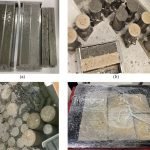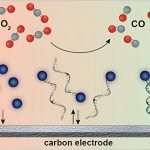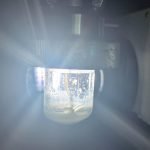Scientists set new efficiency record for binary organic solar cells
In a big leap for solar energy, scientists have made a solar cell that's not only really efficient but also holds up well over...
Scientists find clever way to harvest blue energy from waves
Ocean waves are not just for surfing anymore; they could be the key to unlocking a new source of clean energy.
Researchers have found a...
New way to make chemistry and computers work together
In a lab at the University of Glasgow, a team of scientists has made a groundbreaking leap by merging the worlds of chemistry and...
Scientists unravel the cycle of “forever chemicals”
A recent investigation by the team at Stockholm University has shed new light on the behavior of per- and polyfluoroalkyl substances, commonly known as...
Scientists invent a super safe and efficient battery material
Scientists have recently made a groundbreaking discovery in the world of batteries, which could change the way we use our gadgets and electric vehicles.
In...
Chemists discover a key protein in how lysosomes work
Lysosomes, often reductively referred to as the "garbage disposals" of cells, play a pivotal role in our cells’ digestive systems by getting rid of...
Scientists unlock the secrets of sand for revolutionary energy storage
Have you ever raced across a hot beach and noticed how warm the sand gets?
That simple experience hints at a powerful idea that could...
Scientists create new recipe for eco-friendly concrete
Researchers at Flinders University, along with teams around the globe, have made a big leap in sustainable construction by developing a new type of...
Scientists find way to turn carbon dioxide into valuable products
MIT chemical engineers have made a groundbreaking discovery that could turn a major environmental villain—carbon dioxide (CO2)—into valuable products like fuels and chemicals.
This innovative...
Scientists find new way to turn air into fuel
In an exciting leap forward for green technology, scientists have developed a new method to transform CO2, a gas that contributes to global warming,...










